
In March of 2019, it seemed like every single New Yorker and news outlet had an opinion about Hudson Yards, the fancy new neighborhood at the northern end of the High Line.
It was an expensive and controversial project and people argued that perhaps we should fix up what we already have. Well, it turns out those plans were already in the works, resulting in three of New York City’s most beloved sites getting major makeovers.
The Statue of Liberty Museum

With its low grass-covered roof, the new Statue of Liberty museum appears to rise out of the earth itself. The floor-to-ceiling glass walls make possible views across the harbor, over the Manhattan skyline, and down the brick-laid plaza to the looming Lady herself.
“It’s as state of the art as a museum could be,” said a park ranger we spoke to in the nearby information center. He was referring to the museum’s architecture as well as its green design. The grass section of the roof is a friendly habitat for native vegetation, while the glass walls are marked with lines to warn away low-flying birds.
Prior to the opening of the new museum in May 2019, the pedestal at the Statue’s base served as the main museum. This has been a problem for years, unable to accommodate the 4.5 million visitors that disembark at Liberty Island every year. In order to see the enter the museum, visitors had to purchase Pedestal or Crown tickets, go through a second layer of security screening, and either wait in long lines for the elevator or opt to climb 215 steps to reach the museum.
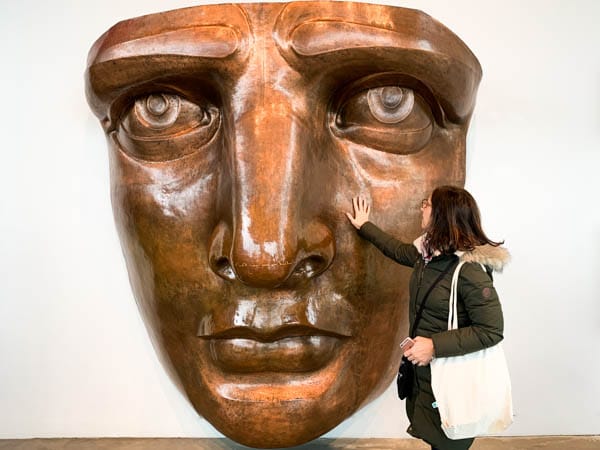
The number of people who could enter the museum was limited and from the National Park Service’s point of view, visitors were deprived of an important educational experience. I went to the museum years ago, when it was still located inside the pedestal and while I learned a lot of history behind the Statue of Liberty National Monument, the museum space was dim and unimpressive.
Now, Reserve tickets, purchased from Statue Cruises, are sufficient for entry into the museum. Once on Liberty Island, the museum is open and free to all.
The museum isn’t huge and since it’s included in the cost of your ferry ticket, you may be tempted to skip it altogether. However, there are some highlights not to be missed.
First, the original torch, with a spacious, light-filled corner all to itself, is on display. The torch was damaged and eventually replaced with a brand new one on July 4, 1986 to celebrate Liberty’s 100th anniversary. Informational panels and photos surround the old torch, describing how it sat in Madison Square Park from 1876-1882 in order to raise funds to build a pedestal.

Another main attraction is the immersive three-part introductory film that, as headlines have recently stated, revisits the original intention of Edouard Laboulaye, who first conceived of the statue in 1865. The Civil War had ended and Laboulaye, an anti-slavery activist, was ecstatic that slavery had been abolished. He wanted to send a gift to the U.S. to celebrate the end of that barbaric practice.
On Liberty Island, there will always be one superstar and that, to use her full given name, is Liberty Enlightening the World. But I strongly recommend starting your visit at the museum for some history and context before getting up close and personal with one of the most famous landmarks in the world.
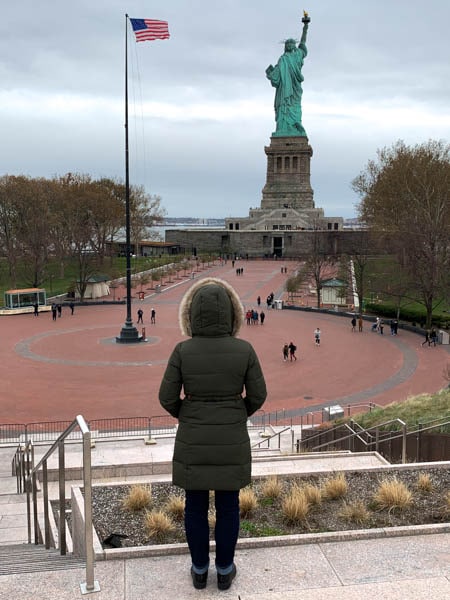
For more background information on the new museum, check out “Liberty: Mother of Exiles,” the 2019 HBO documentary, which begins with the museum’s 2016 groundbreaking.
Fashion designer Diane Von Furstenberg led the museum’s fundraising campaign and in the film, viewers follow her to France, where she visits the hometown of Frederic Bartholdi, the 19th century sculptor and tireless fundraiser. She also visits with descendants of Bartholdi, Laboulaye, and Gustave Eiffel, who built the monument’s skeleton and made it possible for her to withstand the battering winds that can whip across the New York Harbor.
We also learn about the placement of the museum. It’s located on the back corner of Liberty Island in the same place where the homes of park rangers and superintendents used to live with their families.
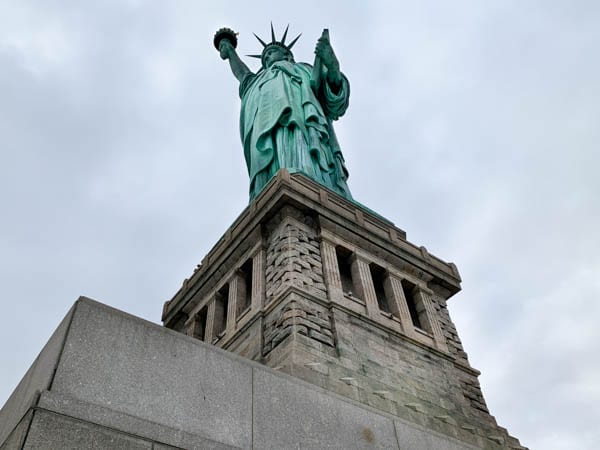
By 2012, only one couple remained living on the island and the homes that used to form an island community were destroyed in Hurricane Sandy. The museum sits where the homes used to be.
Visiting Liberty Island and the Statue of Liberty Museum
- Purchase tickets online at StatueCruises.com. The time on your ticket indicates the time you can enter the Security Facility. After being screened, you can board the next available ferry. Ferries depart every 20 minutes from 8:30 a.m. to 5:00 p.m.
- Choose Reserve, Pedestal, or Crown tickets. See options here. Crown Reserve tickets tend to sell out far in advance.
- All ticket types allow access to Liberty Island, the Statue of Liberty Museum, Ellis Island, and the Ellis Island Immigration Museum. Separate tickets must be purchased for the Ellis Island Hard Hat Tour.
- A limited number of same-day tickets are available at the Statue Cruises box office.
The 102nd Observatory at the Empire State Building
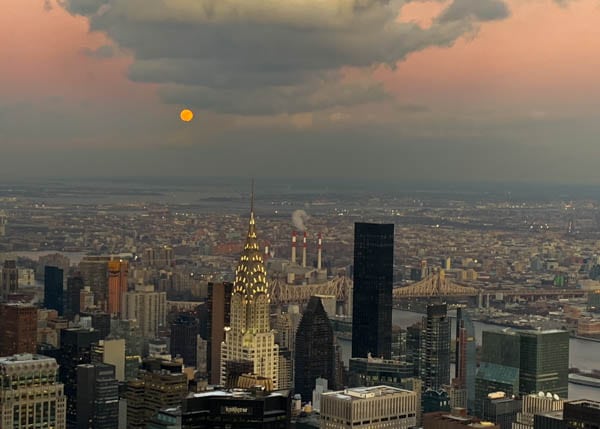
To put it mildly, New York City can be challenging. The subway breaks, like a lot. The weather can be unseasonably warm one day and drop buckets of messy sleet the next. And forget about the so-called magical holiday season–the city gets so crowded that you can’t get near that famous tree with a ten-foot selfie pole!
Obviously, I’ve been feeling a little like a Grinch these days but I recently found a cure for my city blues when Matt and I went up to the Empire State Building’s new 102nd Floor Observatory. The “Eye on the World” opened to the public in October 2019 and is the newest feature of a four-year, $160 million renovation project.
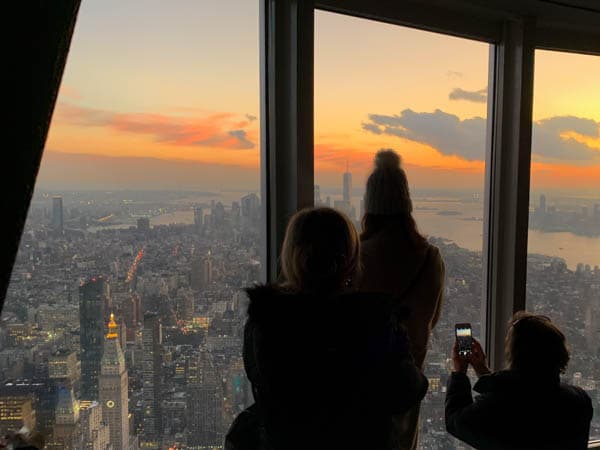
Way up there, 1,250 feet above street level, steel walls have been refitted with 8-foot floor-to-ceiling glass windows for panoramic views of Central Park, all five boroughs, New Jersey, and the Atlantic Ocean.
We went at sunset and watched the sun blaze a bright color of red before it set somewhere beyond New Jersey. The sky turned deeply pink, then red and a trillion city lights began to sparkle.
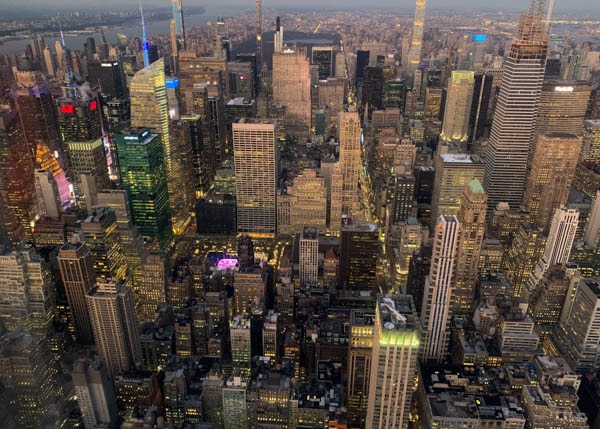
I followed the straight line of Fifth Avenue up to Central Park, then picked out the ant-sized humans ice skating at Bryant Park. Matt pointed to the swish symbol on top of the Nike building. “Who can see that?” I wondered. “Who is it for?” “It’s for us,” Matt said.
The moon rose quickly, just a sliver shy of being full, a little above the pyramid-shaped roof of Met Life Clock Tower and it felt like being in church. I had officially reconnected with my city.
The 102nd Floor Observatory is not the only new feature of the Empire State Building. The 2nd floor now includes a gallery of exhibitions, showing its place in pop culture throughout the years and best of all, an immersive exhibit dedicated entirely to King Kong. The beloved beast has been a New York fixture for almost as long as the Empire State Building itself—the movie premiered in 1933, just two years after the building’s completion.
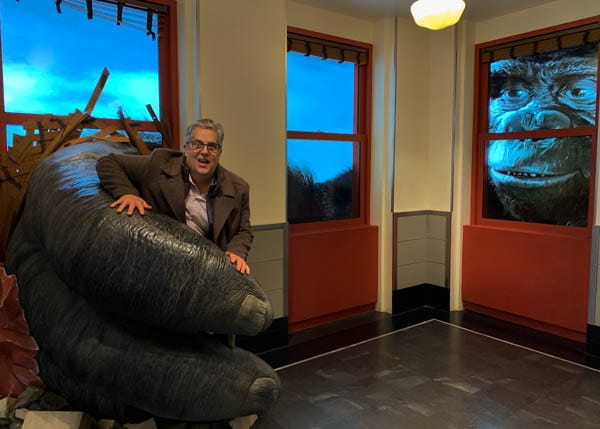
If you’ve never been to the Empire State Building or haven’t been in a while, here’s what you can expect: you’ll enter at 20 West 34th Street, under the doorways marked “Observatory.” From there, the helpful staff will point you in the right direction.
A short flight of stairs leads to the 2nd Floor Museum and then an elevator takes visitors to the 80th floor. During this ascent, look up! A multimedia display, showing the building’s construction, plays on the ceiling.
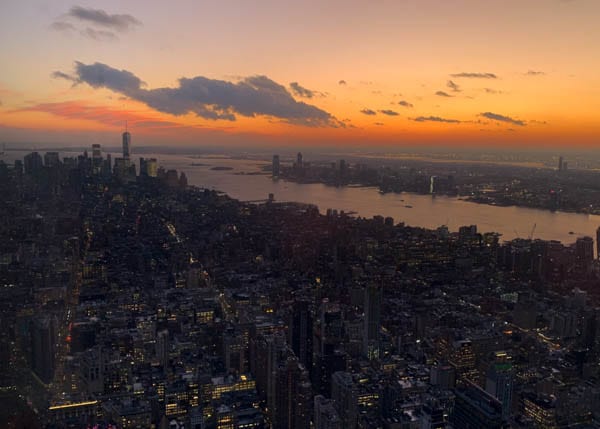
Another elevator awaits to whisk you up to the 86th Floor Observatory. This is the outdoor Main Deck that we’re all familiar with from films like “Sleepless in Seattle.” If your ticket allows you to continue upwards, there’s one more, brand new glass elevator that soars up to the incomparable views of the 102nd Floor.
Visiting the Empire State Building
Different ticket experiences, at different prices, are available. If you want to visit the new 102nd Floor Observatory, be sure to select that option. Tickets are available online and also onsite at the Observatory ticket office.
A 21st Century Revamp at the Museum of Modern Art
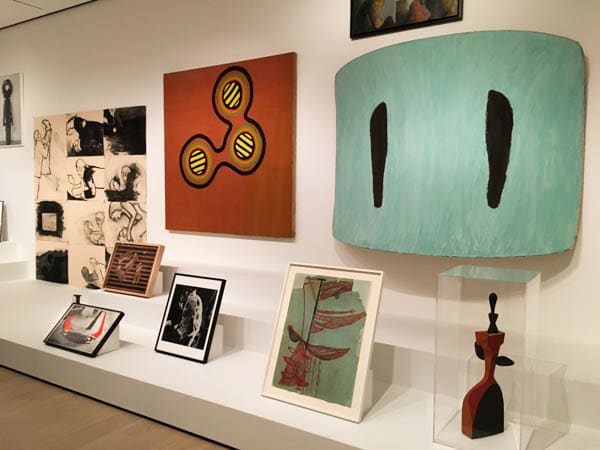
For me, the first sign of great change was the women. As I was walked through the newly renovated galleries at the Museum of Modern Art, the different uses of color kept catching my eye. That led me to inspect the artists more closely. A red and gold collage titled “Bitches Brew” stood out. I hadn’t heard of the artist–Jutta Koether–and according to the informational panel, she is still very much alive, compared to the long-dead artists the MoMA had previously focused on.
I’m no art expert. Unless the works are distinct or famous, I often can’t identify them. But two things helped me understand the museum’s changes, which they revealed to the world on October 21, 2019 after a four-month closure for renovations.
First, my friend who is art literate sent me a review by critic Jerry Saltz. I read it before I went and it helped me frame my expectations beforehand and then put into words later how I might describe MoMA’s new aesthetic.
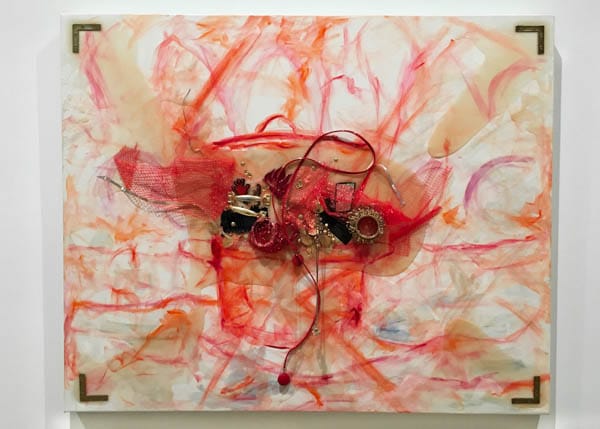
And second, I’ve been to the MoMA many times, thanks to my super-cute and ever-curious niece and nephew. They visit us for a week every summer and when they were still in grade school, before they knew or cared that it contained the largest collection of modern art in the world, they decided that MoMA was the museum they liked the best. Now we try to squeeze it in whenever they come to New York.
They’re both in college now and busy with jobs and friends and life, so they don’t make it here as often. But I went to the renovated MoMA with them in mind—they push me to stay cultured.
If you loved the MoMA before the $450 million renovation like my niece and nephew did, don’t worry. All the biggies are still there: Monet’s “Water Lilies,” Warhol’s “Campbell Soup Cans,” and of course, “Starry Night.”
But the changes are good and they’re obvious. In fact, 28% of its collection will now come from women, while 21% will come from lesser known artists from places other than the United States, Canada, and Western Europe. That deliberate, significant change shows marginalized artists that someone is paying attention and shows museum-goers that MoMA recognizes social progress.
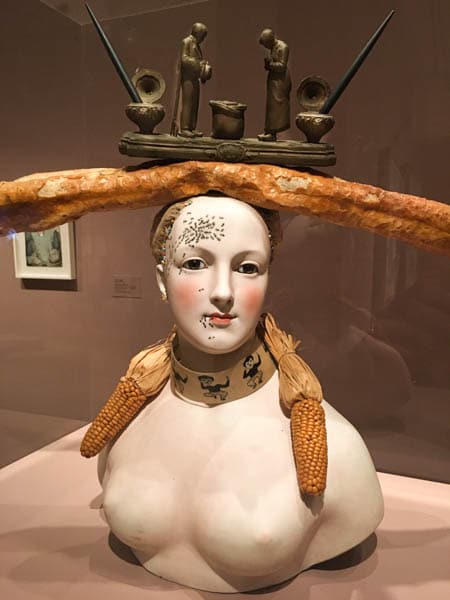
Previously, MoMA’s works were organized chronologically, highlighting which older (white, male) artist influenced the next (white, male) artist. Now the pieces are grouped together in different configurations to tell the stories in a different way.
A couple other things caught my attention: works from artists I had heard of but never seen like Romare Bearden; and prior exhibitions that I had missed seeing, like “The Migration Series” by Jacob Lawrence. Oh and I learned that Marcel Duchamp sometimes made art under his alternate, female identity named Rrose Sélavy.
The newly remodeled MoMA felt like a layer of stuffiness had been peeled away, replaced with light and space for discovery.

In fact, I think that’s true for each of the three newly renovated landmarks–they’ve all opened new space for discovery and invite us in to look at them in new ways.
I’ve read many blog posts and articles that encourage tourists to skip visiting New York’s major landmarks. The Statue of Liberty is overrated, they say; or the MoMA too crowded.
I couldn’t disagree more. Yes, popular tourist sites can get crowded. And it’s also important to get off the beaten path–smaller museums and local history is uniquely interesting, too. But after a lifetime of seeing say, the Statue of Liberty, on television or as a tiny pinprick in the distance, it’s thrilling to finally see her up close.
Visiting the Museum of Modern Art
Conveniently located in midtown Manhattan at 11 West 53rd Street. Admission is free every Friday from 5:30 – 9:00 pm. The line to enter on Friday evenings often winds around the block but usually goes quickly.